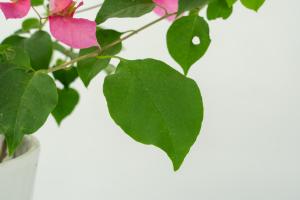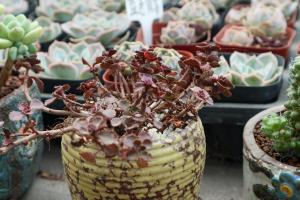A branch is thrown into the sand and gives birth to a big white root
Sand is a very useful medium for cutting. Sand has strong permeability and fast rooting. Huahua today takes triangle plum as an example

Operation steps:
1. Screen the sand and prepare the coarse sand with larger particles
2. Prepare a basin of yellow soil, grind it into powder, add some rooting powder, pour in water and mix it into yellow mud
3. Choose the branches of trigonometry plum that need cutting, and it is best to choose the branches of more than 1 year, so as to survive easily
4. Prune the branches of Prunus deltoides that need cutting and cut them into small segments of about 7-10CM
5. Soak the lower end of the branch in yellow mud for about 2-3cm
6. Prepare pure coarse sand, and then insert the cuttings into the sand
7. The water permeability of sand is very strong, so it takes about 1-2 times a day to sprinkle water on the sand basin. It only takes about 1 month, and the cuttings of triangular plum can take root
8. Transplant the rooted Prunus triangularis into the flower pot. First put it in a cool and ventilated place for 1 week. After 15 days, you can pour some compound fertilizer and water, which can make the Prunus triangularis grow more prosperous
1. Cushion the bottom of the basin with sand and keep the flowers for 10 years without rotten roots
Rotten roots are the most feared thing when raising flowers every time, and the water permeability of large particles of sand is very strong. Padding points at the bottom of the basin can effectively prevent rotten roots

Operation steps:
1. Sift the sand through a sieve and leave the large particles of sand, while the fine sand is set aside for standby
2. Clean the remaining coarse sand with clean water continuously, so as to remove the fine sand and impurities on the coarse sand and avoid blocking the gap, resulting in the decline of water permeability. When clean water appears during panning, it is clean
3. In the washed coarse sand, pour in hot water for about 3-5 times, and then take it out and dry it in the sun. The sand scalded with hot water can sterilize and disinfect, avoid breeding moss, and prevent the sand from sticking to the inner wall of the flowerpot, resulting in uneven paving at the bottom of the basin
4. Lay the coarse sand on the bottom of the basin, and then pad it with nutrient soil, so you can directly use it to raise flowers. Large grains of sand are padded on the bottom of the basin to achieve the purpose of loosening and ventilation, so that the flowers will never rot again
5. Don't throw away the remaining fine sand. Mix it directly with the basin soil and use it when putting flowers in the basin. Peat soil, garden soil and sand can be configured in the proportion of 2:2:1, which can effectively prevent soil hardening and root rot
1 sprinkle sand on the basin and never recruit insects again
In spring, many small insects begin to emerge. These days, many flower friends feed back to Huahua that there are many small black flies at home, so Huahua is ready to sprinkle a handful of sand on the basin surface

Operation steps:
1. Soak the sand in carbendazim solution for at least 2 hours to sterilize the sand and avoid various bacteria, and then dry it in the sun
2. A thin layer of sand on the basin surface can not only prevent small black flies and other insects from laying eggs on the basin surface, but also make it easier to penetrate when watering, so as not to let the water splash out
Pour sand into the basin and the soil will not harden any more
If the flowers at home are kept for a long time, or if the pots are not changed for a long time, it is easy to cause the soil to harden, and the watering can not penetrate into it. After a long time, the roots will rot without breathing

Operation steps:
1. If you find that the soil hardening is particularly serious, you must use tools such as a small shovel to loosen the surface of the basin soil first
2. Prepare several unused straws, and then find some coarse sand with large particles
3. Poke a few small holes on the surface of the flowerpot with a straw, and then insert the straw. The deeper the better
4. Firm the soil next to the straw, then slowly pour coarse sand into the straw, and then pull out the straw, and the sand will remain in the basin soil. When watering each time, the water will slowly flow into the flower pot through the sand column, thus slowing down the hardening of the pot soil
That's all for Huahua today
What questions do you have
Leave a message to consult Huahua

 how many times do yo...
how many times do yo... how many planted tre...
how many planted tre... how many pine trees ...
how many pine trees ... how many pecan trees...
how many pecan trees... how many plants comp...
how many plants comp... how many plants can ...
how many plants can ... how many plants and ...
how many plants and ... how many pepper plan...
how many pepper plan...
































